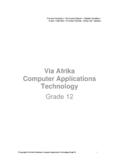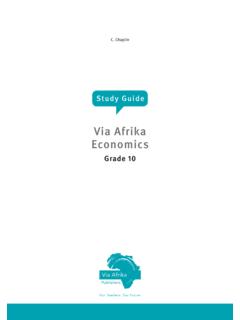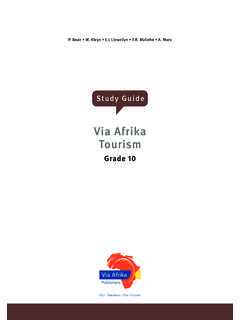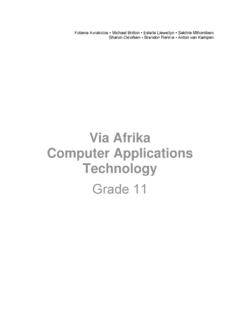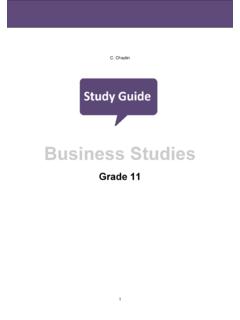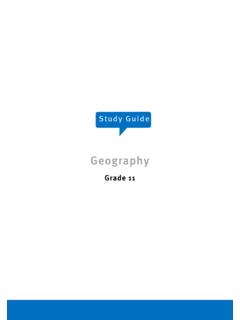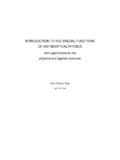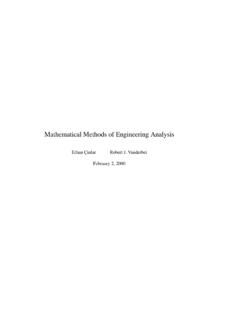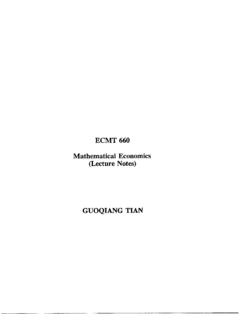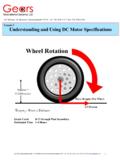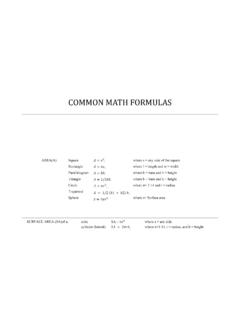Transcription of Via Afrika Mathematical Literacy - Lebowakgomo …
1 Via AfrikaMathematical LiteracyGrade 10 Study GuideA. Gilfillan N. Vermeulen Via Afrika Publishers Mathematical Literacy Grade 10iiContentsIntroduction to Mathematical Literacy ..iiiTopic 1 Basic Skills ..2overview ..3 Chapter 1 Numbers and calculations with numbers ..4 Practice Exercises ..19 Chapter 2 Patterns, relationships and representations ..25 Practice Exercises ..36 Topic 2 Application of Mathematical Skills ..43overview ..44 Chapter3 Finance ..45 Practice Exercises ..65 Chapter4 Measurement ..75 Practice Exercises ..94 Chapter 5 Maps, plans and other representations of the physical world.
2 103 Practice Exercises ..114 Chapter 6 Data Handling ..122 Practice Exercises ..140 Chapter 7 Probability ..145 Practice Exercises ..153 Exam Papers ..155 How question papers are drawn up ..155 Question Paper Paper 2 ..168 Question Paper 1 Memorandum ..172 Question Paper 2 Memorandum ..180 Glossary ..186 Via Afrika Publishers Mathematical Literacy Grade 10iiiIntroduction to Mathematical LiteracyWhat is Mathematical Literacy all about?According to the Curriculum and Assessment Policy Statement (CAPS) for Mathematical Literacy :The competencies developed through Mathematical Literacy allow individuals to make sense of, participate in and contribute to the twenty-first-century world a world characterised by numbers, numerically based arguments and data represented and misrepresented in a number of different ways.
3 Such competencies include the ability to reason, make decisions, solve problems, manage resources, interpret information, schedule events and use and apply must be exposed to both Mathematical content and real-life contexts to develop these content is needed to make sense of real-life contexts; on the other hand, contexts determine the content that is is clear that, in Mathematical Literacy , both Mathematical content and real-life contexts are crucial. Mathematical content provides us with a means for accessing and making sense of real-life contexts, while real-life contexts provide meaning for the content and a reason for learning the important to content and context, however, is that learners must develop problem-solving skills.
4 This involves the ability to apply Mathematical content in order to solve problems based on often complex and unfamiliar real-life contexts. The focus in Mathematical Literacy is on the use of content rather than on the knowing of skills Problem-solving skillsv Problem-solving skills Problem-solving skillsContent Content Via Afrika Publishers Mathematical Literacy Grade 10ivHow this guide will help youThis Via Afrika Study Guide will help you prepare for your Grade 10 end-of-year examination. The authors carefully thought of what a learner requires to effectively prepare for and successfully write the examination.
5 They identified these needs: an understanding of the basic Mathematical content that will be assessed in the end-of-year examination an understanding of the nature and purpose of Mathematical Literacy , and how it will be assessed an example of Paper 1 and Paper 2 with complete solutions, accompanied by comments to help you understand how to answer each meet these needs, this Study Guide has been divided into the following topics:Topics 1 and 2 Basic and Application Mathematical SkillsThese contain summaries of the Mathematical content and skills that you should topics have been divided into chapters, each dealing with a different concept.
6 It follows this pattern: revision of the concepts outlined in the curriculum for Grade 10 examples based on the concepts covered practice exercises that give you opportunities to practise what you have through the topics thoroughly to enable you to apply the necessary concepts and skills when you work through the exam question papersThis section contains information about: how exam question papers are drawn up how Paper 1 is different to Paper 2 the four levels on which you will be assessed how to approach answering questions in any exam (or test) addition, this section contains: examples of Paper 1 and Paper 2 memoranda (solutions) to the two papers comments in the memoranda to help you understand and answer each question.
7 These comments refer to the level of the question, the purpose of the question, and the content or skills required to answer the Via Afrika Publishers Mathematical Literacy Grade 102 Basic skillsTopic1 Basic skillsNumbers and calculations with numbersTOPIC 1 Page 2 CHAPTER 1 Page 4 Making sense of graphs that tell a story Relationships and variables Linear relationships Non-linear relationships Constant (fixed) relationships More about equations Number formats and conventions Operations on numbers and calculator skills Rounding Ratio Proportion Rate PercentagePattern.
8 Relationships and representationsCHAPTER 2 Page 25 UnitXX Via Afrika Publishers Mathematical Literacy Grade 103 Numbers and calculations with numbersChapter1 OverviewBasic skillsCHAPTER 2 Number formats and conventionsSECTION 1 Page 3 The thousands separator Number conventions and decimals Different numbering conventions Negative &positive numbers as directional indicators Order of operations Powers and roots Calculator skills Fractions Estimation Dividing & multiplying by 10, 100,1000 without a calculatorOperations on numbers and calculator skillsSECTION 2 Page 4 Rounding off Rounding up Rounding downRoundingSECTION 3 Page 8 Basic principles Calculating using ratio.
9 The Unit Method Comparing ratios Sharing an amount in a given ratioRatioSECTION 4 Page 10 Direct proportion Indirect (inverse) proportionProportionSECTION 5 Page 13 Constant rate Average rateRateSECTION 6 Page 14 PercentageSECTION 7 Page 16 UnitXX Via Afrika Publishers Mathematical Literacy Grade 104 Section1 Number formats and conventionsThe thousands separator In large numbers, we use spaces to separate thousands. For example: 2 876 950 is 2 million eight hundred and seventy six thousand nine hundred and fifty . In most overseas countries, commas are used to separate thousands.
10 So, in the USA for example, this number would be written as 2,876,950. Large numbers that you need to know include: 100 000 = one hundred thousand 1 000 000 = 1 million 1 000 000 000 = 1 conventions and decimals A decimal comma indicates that a number includes both a whole number and a part of a whole. So, R25,95 means 25 rands and 95 parts of a rand . In South Africa we use the decimal comma (0,95) while on your calculator and in most overseas countries the decimal point ( ) is used. We read the numbers that occur after the comma as they occur.
